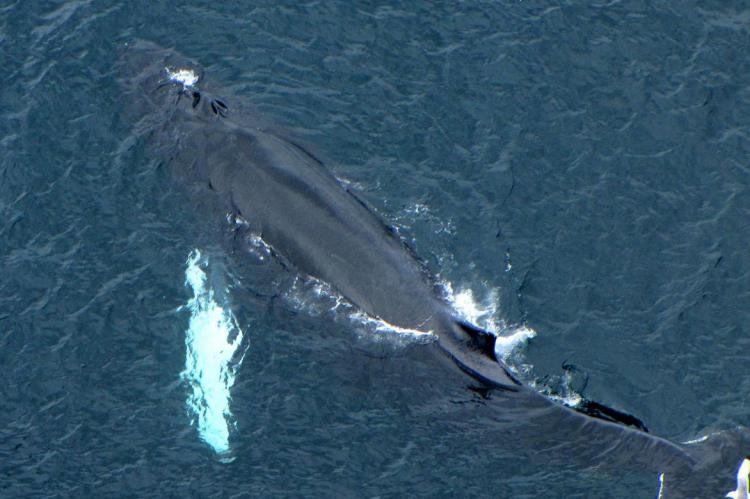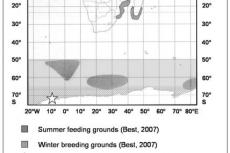Some humpbacks stay over winter in Antarctica
Not all of the Southern Hemisphere humpback whales migrate towards the equator at the end of the Antarctic summer
According to common belief, at least up to now, humpback whales migrate to Antarctic waters only in the austral summer months.
And even then, standing believes were that they would only be feeding on krill in the ice-free regions around 60 degrees south latitude. However, the PALAOA (PerenniAL Acoustic Observatory in the Antarctic Ocean) observatory monitors an area 70 degrees south – so, much further south than hitherto known feeding grounds.
"With this in mind, hearing the animals on a winter morning near our observatory was a double surprise," explains Dr. Ilse Van Opzeeland, a marine biologist and expert on large whales at the Alfred Wegener Institute, Helmholtz Centre for Polar and Marine Research (AWI). "At this time the marine mammals should long have been swimming 7,000 kilometres further away in the warmer waters off Africa."
Unique or regular
Driven by the question whether the winter-excursion of the humpback whales in the eastern Weddell Sea was a unique event, Van Opzeeland developed a procedure for the automatic detection of humpback whale calls and analysed all PALAOA recordings from 2008 and 2009 for acoustic signs of life from these animals.
A humpback whale-female loses up to 65 per cent of her body weight when giving birth to and suckling a calf. With this in mind, it appears energetically advantageous, from the viewpoint of the young whale cows, to remain in Antarctic waters during winter.
Furthermore, the coastal region of the eastern Weddell Sea likely provides krill concentrations substantial enough for the animals to find sufficient food, even in the colder season, to acquire sufficient fat-reserves for reproduction and the long trip in the following year," explains Van Opzeeland.






























